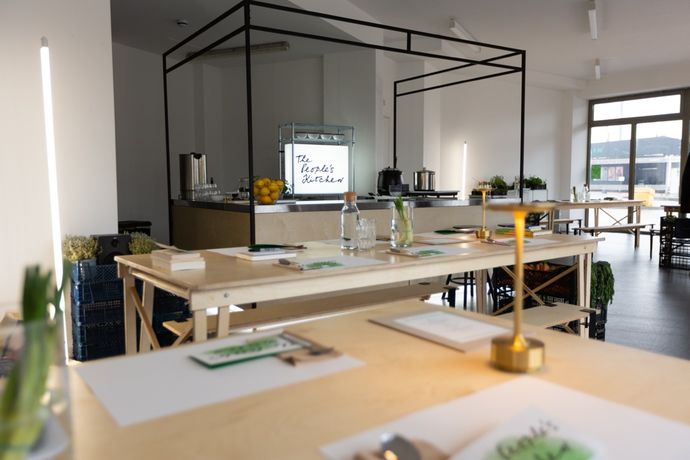
The People’s Kitchen: Co-creating place
David Shearing describes his project The People’s Kitchen which was hosted in Rainham, a small town in the east of London. It brought together local people, community groups and organisations to cook, eat and converse together.
What was the aim of The People’s Kitchen?
The project brought together local people, community groups, and organisations to serve over 500 bowls of locally produced soup and provided a space to engage in meaningful conversations about the things that nurture us.
The project was more than just a pop-up food kitchen. It offered a space of hope and togetherness where different groups and demographics could co-inhabit the environment. The People’s Kitchen provided a cultural hub right on the town’s high street and helped pose new questions about the role of arts spaces beyond that of galleries, theatres, museums, and libraries.
How did you encourage people to get involved in the project?
Through an open-call, over 30 interested local people and activists joined a workshop in Rainham to imagine and discuss the project together, building local connections between councillors, food banks, religious organisations, and youth services. From this, we devised how the project would look, what events we could stage and asked what does Rainham need?
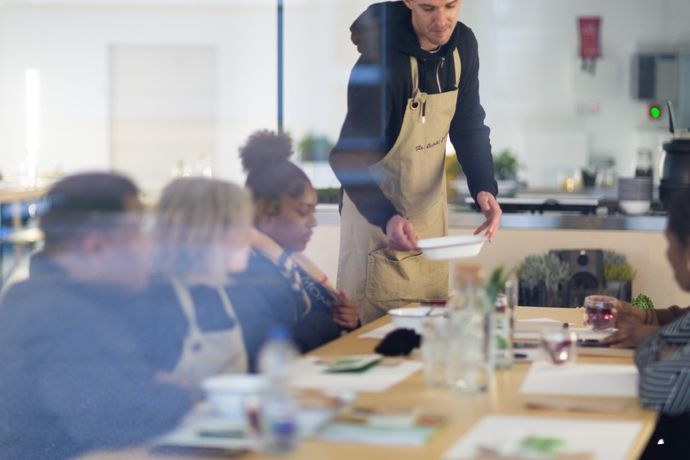
One of the unique aspects of The People’s Kitchen was that it enabled all different groups to exist within the same art experience. The project examined how material design might foster the conditions to bring different group of people together. The design brief was to provide a sense of quality and care, mixing class-based references - create something that was both humble and inviting.
How did the project take place?
The People’s Kitchen featured pop-up events, including a young people’s dinner, where teenagers from the Rainham Royals youth group worked with chef Megha Kochhar Arora from CREM Kitchen to serve up a tasty meal for adults. The young people did the cooking and the hosting, inviting their adult guests to question where they saw themselves in five years. The role reversal was designed to offer a sense of empowerment for the young people.
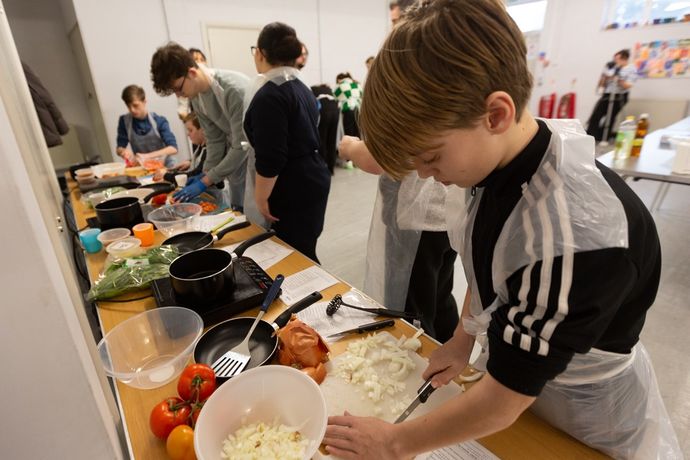
A special event was also held where members of the public could nominate someone incredible to attend a special Mindful, Food, and Art evening hosted by Bluerskies community producers Charlotte Trower and Lucy McDonald.
What did you learn from The People’s Kitchen?
The People’s Kitchen is an example of how art can bring people together to inspire social change and promote environmental and social justice. The project encouraged attendees to slow down, connect with each other, and imagine new futures. The success of The People’s Kitchen demonstrates the power of community-led initiatives and the importance of bringing people together to create new types of art spaces in the heart of our communities and how we have better public conversation.
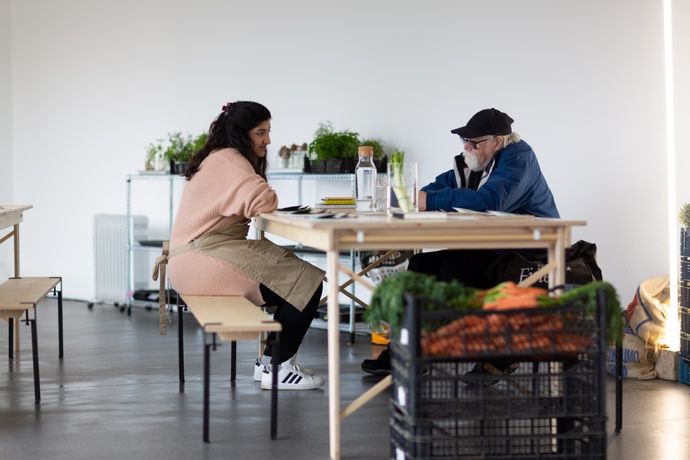
The People’s Kitchen was a space where people from different socio-economic backgrounds, including those who were homeless, were able to find physical nourishment, while families were able to stop and take a moment out, and commuters returning from work offered a space to decompress. The project explored questions about co-creation and food ecologies within community contexts, showing the potential of art to bring people together and spark social change.
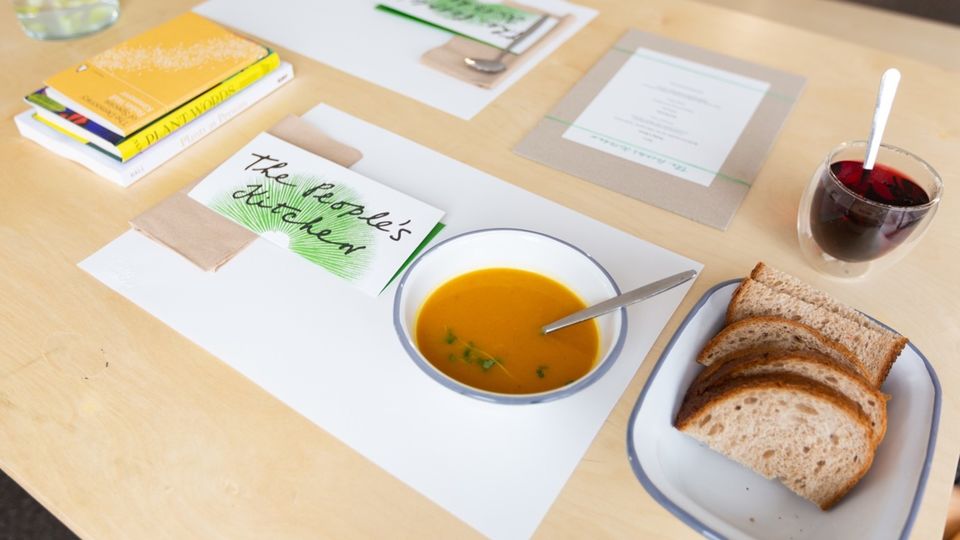
For more on Variable Matter’s work please visit www.variablematter.com
Words by David Shearing, images by Hannah Davis (2023).
